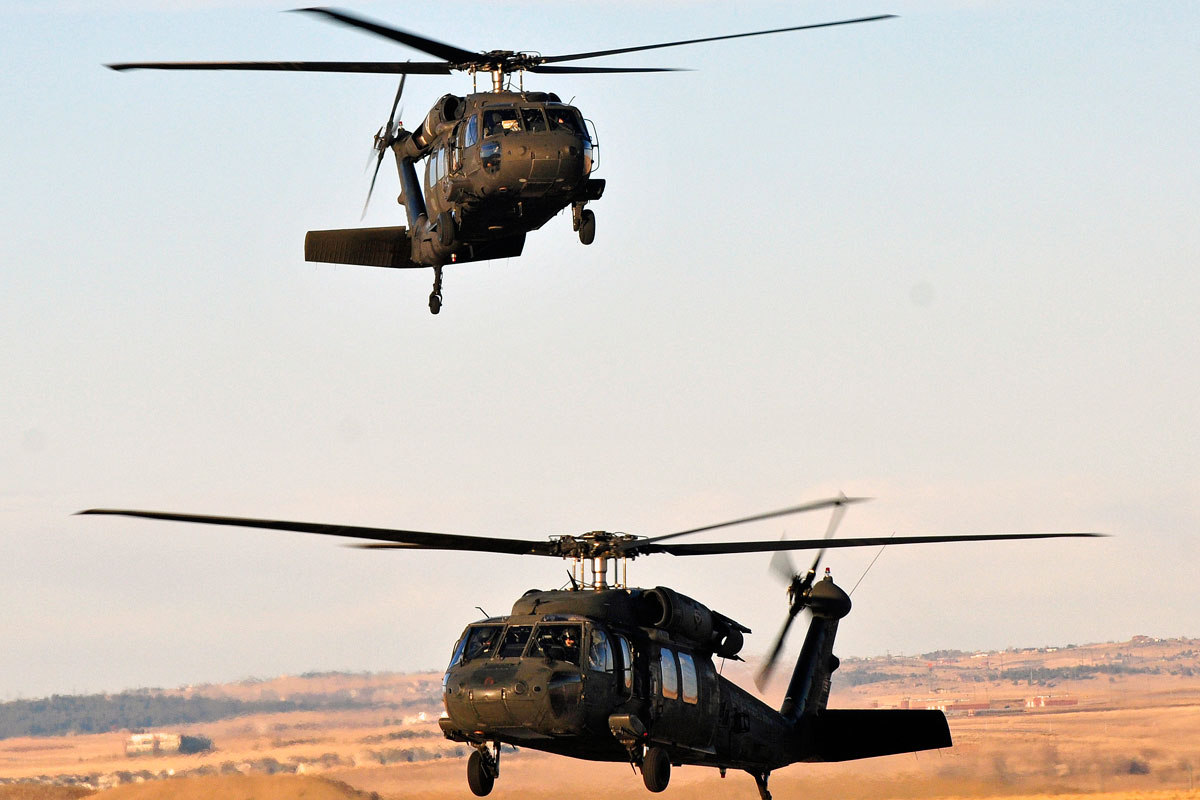Flying: Uh-60 Black Hawk Pilot Qualification Refine Clarified
Flying: Uh-60 Black Hawk Pilot Qualification Refine Clarified
Blog Article
The UH-60 Helicopter: Browsing Through Its History, Style, and Substantial Duty in Aviation
The UH-60 helicopter, typically described as the Black Hawk, stands as a testimony to the advancements in aviation innovation and its obvious influence on both military and civilian procedures. From its humble beginnings to its current status as a symbol of reliability and flexibility, the development of the UH-60 has been marked by constant development and adaptation to satisfy the developing requirements of the air travel market. As we dig into its history, design intricacies, and the essential role it plays in various sectors, a much deeper admiration for this legendary helicopter arises, clarifying the considerable contributions it has actually made to the world of air travel.
Development of the UH-60 Helicopter

The development of the UH-60 helicopter can be mapped back to the need for a trusted and versatile utility airplane that can meet the demanding needs of modern armed forces procedures. Created by Sikorsky Aircraft, the UH-60 Black Hawk first took flight in 1974, with the united state Military becoming its primary operator. Throughout the years, the UH-60 has actually undertaken several upgrades and variants to improve its abilities and efficiency.

Design Technologies and Features

Moreover, the UH-60 features a sophisticated avionics suite that consists of innovative navigation systems, communication equipment, and electronic screens. These technological developments improve situational recognition for the staff, improving overall goal efficiency and security. The helicopter's spacious cabin layout assists in quick and very easy loading and dumping of soldiers, equipment, and casualties, making it a functional possession for military procedures and catastrophe relief initiatives.
In addition, the consolidation of composite materials in essential structural components minimizes weight while preserving sturdiness, enhancing the UH-60's efficiency and fuel efficiency. The UH-60 helicopter's ingenious design components collectively add to its credibility as a very capable and reliable airplane in both armed forces and noncombatant aviation fields.
Noncombatant and military Applications
With versatile capabilities fit more information for a variety of functional demands, the UH-60 helicopter offers both private and army industries effectively. The UH-60's advanced avionics, protective systems, and convenience have solidified its setting as a foundation of army helicopter fleets.
In addition, the UH-60's versatility for VIP transport and overseas operations further highlight its value in private applications. Whether in military or noncombatant usage, look at this site the UH-60 helicopter continues to verify its worth as a versatile and indispensable airborne platform.
Effect on Aviation Procedures
Having actually established its importance in armed forces and private applications, the UH-60 helicopter's impact on aeronautics procedures prolongs past its functional capacities to affect a vast selection of airborne goals. In army setups, the UH-60 plays an important function in troop rescue, search and transport operations, clinical discharge, and unique operations support.
In private operations, the UH-60 serves various important functions, such as firefighting, law enforcement support, disaster relief initiatives, and airborne studies. uh-60. Its adaptability allows quick reactions to emergencies and all-natural calamities, helping in conserving lives and securing neighborhoods. Additionally, the UH-60's integrity and endurance make it a recommended option for utility missions, consisting of transport of cargo and personnel to remote areas. Generally, the UH-60 helicopter substantially affects aviation procedures by supplying unrivaled capabilities and assistance across a wide spectrum of missions.
Future Developments and Leads
The development of the UH-60 helicopter is positioned to transform aeronautics capabilities and improve operational paradigms in the coming years. Advancements in innovation and layout are driving the development of next-generation UH-60 versions that promise enhanced rate, mission, and agility adaptability. One vital area of focus for future UH-60 versions is boosting autonomous abilities to boost functional efficiency and security. By integrating innovative independent flight systems, the UH-60 can decrease pilot work, make it possible for intricate missions in challenging atmospheres, and improve total goal effectiveness.
Additionally, there is a growing emphasis on sustainability and fuel efficiency in the layout of future UH-60 helicopters (uh-60). Suppliers are discovering new materials, propulsion systems, and aerodynamic improvements to lower ecological influence and operating prices. These innovations not just profit the setting but also contribute to the long-term viability and competitiveness of the UH-60 in the swiftly developing aeronautics industry
Conclusion
:quality(70)/cloudfront-us-east-1.images.arcpublishing.com/archetype/V77OHDESHBCMVNC2PKNIKDQP4E.jpg)
The UH-60 helicopter, often referred to as the Black Hawk, stands as a testament to the innovations in aviation innovation and its obvious effect on both army and civilian operations.Having developed its relevance in civilian read this and army applications, the UH-60 helicopter's effect on aeronautics operations expands beyond its functional abilities to affect a broad selection of airborne goals. On the whole, the UH-60 helicopter significantly impacts aeronautics procedures by supplying unrivaled capacities and support throughout a broad range of objectives.
The evolution of the UH-60 helicopter is poised to change air travel capacities and improve operational paradigms in the coming years. As modern technology proceeds to breakthrough, the future developments and prospects for the UH-60 helicopter continue to be appealing, ensuring its ongoing relevance in the field of air travel.
Report this page